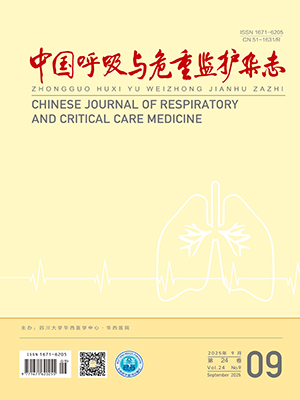Objective To explore the pathogens and clinical features of immunocompromised hosts with septicaemia.Methods The data including underlying diseases, peripheral blood granulocyte count, temperature at blood sampling, management and prognosis)of 160 immunocompromised hosts with septicaemia were analyzed retrospectively.Results 8 patients had twice septicaemia in hospital stay and 3 patients had plural pathogenic septicaemia.171 strains of microorganisms were isolated from blood cultured of 160 septic immuno- compromised hosts in which 156 strains (91.2%) were bacteria, 37 strains(21.6%) were gram positive cocci, 6 strains(3.5%) were gram positive bacilli, 113 strains (66.1%) were gram negative bacilli and 15 strains (8.8%) were fungi. Staphylococcus spp (17 strains) and Streptococcus spp (14 strains) were the predominant pathogens among gram positive cocci and Corynebacteria (5 strains ) were the main pathogen in gram positive bacilli while Escherichia coli (60 strains), Klebsiella pneumoniae (20 strains) and Pseudomonas aeruginosa (15 strains) were the most common bacteria in gram negative bacilli. There were 12 strains of Staphylococcus aureus among the 17 strains of Staphylococcus spp, all of them were methicillin sensitive (MSSA). 17 strains of Escherichia coli, 2 strains of Klebsiella pneumoniae and 1 strain of Klebsiella oxytoca produced ESBLs. Candida was the only pathogens of fungemia in this study in which 4 strains of Candida albicans and 11 strains of non-albicans Candida were detected. There were 120 patients(75%) with granulocytopeniain which 103 patients were agranulocytosis. 70% of the 160 paitents had hyperpyrexia. All patients received broad spectrum antibiotics therapy in the study while 58.8% received antifungal drugs at the same time. 20 patients died of septicaemia and 19 patients gave up therapy because of their conditions deteriorated.The overall improvement rate were 75.6%. Conclusions Bacteria are the main pathogens in septicaemia of immunocom- promised host and fungemia is increasing in recent years.Agranulocytosis is a risk factor of septicaemia in immunocompromised hosts. Hyperpyrexia is one of characteristic signs of these patients.
Citation: CHEN Yanbin,HUANG Jianan,LING Chunhua,LEI Wei,TAO Yueduo,HE Guangsheng. The clinical analysis of 160 immunocompromised hosts with septicaemia. Chinese Journal of Respiratory and Critical Care Medicine, 2008, 08(1): 30-34. doi: Copy
Copyright © the editorial department of Chinese Journal of Respiratory and Critical Care Medicine of West China Medical Publisher. All rights reserved




